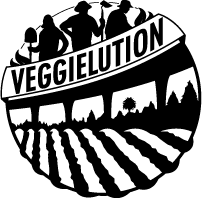Stories from the ground: Getting our Greens with the Goss Elementary Gators
/"Miss Nina! What's this stuff called again?" a fifth grader called to me with his mouth full.
"Kale," I replied.
"Hey," he munched on another leaf. "This kale stuff is pretty good."
"Wow," I thought to myself, "this school garden stuff really does work." Studying nutritional biochemistry, I remember being dubious of the power of school gardens. Eventually I realized that knowing the mechanism of how the phyto-nutrients in green leafy veggies, such as kale, combat free radical oxidation within the body doesn't really matter if the body doesn't consume the green leafy veggies whence those powerful little nutrients come. So my desire to work on a farm and utilize my background in education landed me at Veggielution where I'm happily one of the Youth Education Coordinators, partnering with local Goss Elementary School and working in... the school garden.
By the third week of garden lessons, the fifth graders at Goss elementary hadn't had a chance to actually plant in their brand new garden beds (constructed in September with Goss parents and Veggielution volunteers). Since the construction of the beds, the students and I have since shared the garden in over 30 garden- based nutrition and science lessons. Four classes have visited the farm on field trips. One of the Spanish Cooking Matters classes that Veggielution provides is held on the school campus, and is specifically designed for parents and their kids to learn about nutrition and to cook together. Additionally, an after school garden club is in the works.
Each fifth grader had a hand in planting a robust kale start, raised in the Veggielution greenhouse by Mika, one of our farm crew member. One student would dig the hole, six inches square and at least 10 inches away from surrounding plants. "Give your plant room to grow!" I had reminded them, over their bowed heads and plowing trowels. Another student would then remove the plant from its now outgrown case, fluff up the roots a bit, and place it gingerly into the hole. The last of the group would tenderly tuck the start into its new home and give it its first drink of water. Sixteen little kale plants went into one of the garden beds that week, and sixty fifth graders got to watch their plants grow.
The remarkable thing was watching these beloved first students care for their plants. Groups stopped by the garden to make sure their plants were well watered, and they were keen to make sure that their own plants were the most vigorous, most verdant, and most productive of all. They proposed the proper harvesting technique (stripping the bottom-most leaves off the stalk), citing our previous discussion about photosynthesis. "The kales can keep growing!"
These students take pride in their work and gobble up those green leafy veggies. The teacher of the fifth grader who called the kale "pretty good" noticed a change in behavior. "He's been a real scholar today," explaining that this student often acts out in class. Maybe it was the extra vegetables, maybe it was just a good day. Right now, I'm not doing the research. But I am having a grand time exploring the wonders of the school garden with my new friends.
Nina Vuoso
Youth Education Coordinator
P.S. You can find Nina eating with students in the garden after school at Goss Elementary, and reminding volunteers to sign the sign-in sheet during the Saturday workdays at Veggielution.


